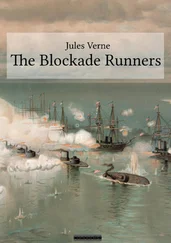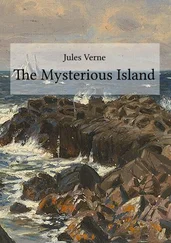“I am surprised, but not astonished,” answered the doctor, laughing; “for the brig Ann , of Poole, from Greenspond, was caught in 1813 in perfect icefields, in the forty-fourth degree of north latitude, and her captain, Dayernent, counted them by hundreds!”
“I see you can teach us something, even upon that subject.”
“Very little,” answered Clawbonny modestly; “it is only that ice has been met with in even lower latitudes.”
“I knew that already, doctor, for when I was cabinboy on board the war-sloop Fly –-“
“In 1818,” continued the doctor, “at the end of March, almost in April, you passed between two large islands of floating ice under the forty-second degree of latitude.”
“Well, I declare you astonish me!” cried Shandon.
“But the iceberg doesn’t astonish me, as we are two degrees further north.”
“You are a well, doctor,” answered the commander, “and all we have to do is to be water-buckets.”
“You will draw me dry sooner than you think for; and now, Shandon, if we could get a nearer look at this phenomenon, I should be the happiest of doctors.”
“Just so, Johnson,” said Shandon, calling his boatswain. “It seems to me that the breeze is getting up.”
“Yes, commander,” answered Johnson; “we are making very little way, and the currents of Davis’s Straits will soon be against us.”
“You are right, Johnson, and if we wish to be in sight of Cape Farewell on the 20th of April we must put the steam on, or we shall be thrown on the coasts of Labrador. Mr. Wall, will you give orders to light the fires?”
The commander’s orders were executed, an hour afterwards the steam was up, the sails were furled, and the screw cutting the waves sent the Forward against the northwest wind.
CHAPTER VI
THE GREAT POLAR CURRENT
Table of Contents
A short time after the flights of birds became more and more numerous. Petrels, puffins, and mates, inhabitants of those desolate quarters, signalled the approach of Greenland. The Forward was rapidly nearing the north, leaving to her leeward a long line of black smoke.
On Tuesday the 17th of April, about eleven o’clock in the morning, the ice-master signalled the first sight of the ice-blink; it was about twenty miles to the N.N.W. This glaring white strip was brilliantly lighted up, in spite of the presence of thick clouds in the neighbouring parts of the sky. Experienced people on board could make no mistake about this phenomenon, and declared, from its whiteness, that the blink was owing to a large icefield, situated at about thirty miles out of sight, and that it proceeded from the reflection of luminous rays. Towards evening the wind turned round to the south, and became favourable; Shandon put on all sail, and for economy’s sake caused the fires to be put out. The Forward , under her topsails and foresails, glided on towards Cape Farewell.
At three o’clock on the 18th they came across the ice-stream, and a white thick line of a glaring colour cut brilliantly the lines of the sea and sky. It was evidently drifting from the eastern coast of Greenland more than from Davis’s Straits, for ice generally keeps to the west coast of Baffin’s Sea. An hour afterwards the Forward passed in the midst of isolated portions of the ice-stream, and in the most compact parts, the icebergs, though welded together, obeyed the movements of the swell. The next day the man at the masthead signalled a vessel. It was the Valkirien , a Danish corvette, running alongside the Forward , and making for the bank of Newfoundland. The current of the Strait began to make itself felt, and Shandon had to put on sail to go up it. At this moment the commander, the doctor, James Wall, and Johnson were assembled on the poop examining the direction and strength of the current. The doctor wanted to know if the current existed also in Baffin’s Sea.
“Without the least doubt,” answered Shandon, “and the sailing vessels have much trouble to stem it.”
“Besides there,” added Wall, “you meet with it on the eastern coast of America, as well as on the western coast of Greenland.”
“There,” said the doctor, “that is what gives very singular reason to the seekers of the NorthWest passage! That current runs about five miles an hour, and it is a little difficult to suppose that it springs from the bottom of a gulf.”
“It is so much the more probable, doctor,” replied Shandon, “that if this current runs from north to south we find in Behring’s Straits a contrary current which runs from south to north, and which must be the origin of this one.”
“According to that,” replied the doctor, “we must admit that America is totally unconnected with the Polar lands, and that the waters of the Pacific run round the coasts of America into the Atlantic. On the other hand, the greater elevation of the waters of the Pacific gives reason to the supposition that they fall into the European seas.”
“But,” sharply replied Shandon, “there must be facts to establish that theory, and if there are any,” added he with irony, “our universally well-informed doctor ought to know them.”
“Well,” replied the above-mentioned, with amiable satisfaction, “if it interests you, I can tell you that whales, wounded in Davis’s Straits, are caught some time afterwards in the neighbourhood of Tartary with the European harpoon still in their flanks.”
“And unless they have been able to double Cape Horn or the Cape of Good Hope,” replied Shandon, “they must necessarily have rounded the septentrional coasts of America—that’s what I call indisputable, doctor.”
“However, if you were not convinced, my dear fellow,” said the doctor, smiling, “I could still produce other facts, such as driftwood, of which Davis’s Straits are full, larch, aspen, and other tropical trees. Now we know that the Gulf Stream hinders those woods from entering the Straits. If, then, they come out of it they can only get in from Behring’s Straits.”
“I am convinced, doctor, and I avow that it would be difficult to remain incredulous with you.”
“Upon my honour,” said Johnson, “there’s something that comes just in time to help our discussion. I perceive in the distance a lump of wood of certain dimensions; if the commander permits it we’ll haul it in, and ask it the name of its country.”
“That’s it,” said the doctor, “the example after the rule.”
Shandon gave the necessary orders; the brig was directed towards the piece of wood signalled, and soon afterwards, not without trouble, the crew hoisted it on deck. It was the trunk of a mahogany tree, gnawed right into the centre by worms, but for which circumstance it would not have floated.
“This is glorious,” said the doctor enthusiastically, “for as the currents of the Atlantic could not carry it to Davis’s Straits, and as it has not been driven into the Polar basin by the streams of septentrional America, seeing that this tree grew under the Equator, it is evident that it comes in a straight line from Behring; and look here, you see those sea-worms which have eaten it, they belong to a hot-country species.”
“It is evident,” replied Wall, “that the people who do not believe in the famous passage are wrong.”
“Why, this circumstance alone ought to convince them,” said the doctor; “I will just trace you out the itinerary of that mahogany; it has been floated towards the Pacific by some river of the Isthmus of Panama or Guatemala, from thence the current has dragged it along the American coast as far as Behring’s Straits, and in spite of everything it was obliged to enter the Polar Seas. It is neither so old nor so soaked that we need fear to assign a recent date to its setting out; it has had the good luck to get clear of the obstacles in that long suite of straits which lead out of Baffin’s Bay, and quickly seized by the boreal current came by Davis’s Straits to be made prisoner by the Forward to the great joy of Dr. Clawbonny, who asks the commander’s permission to keep a sample of it.”
Читать дальше












